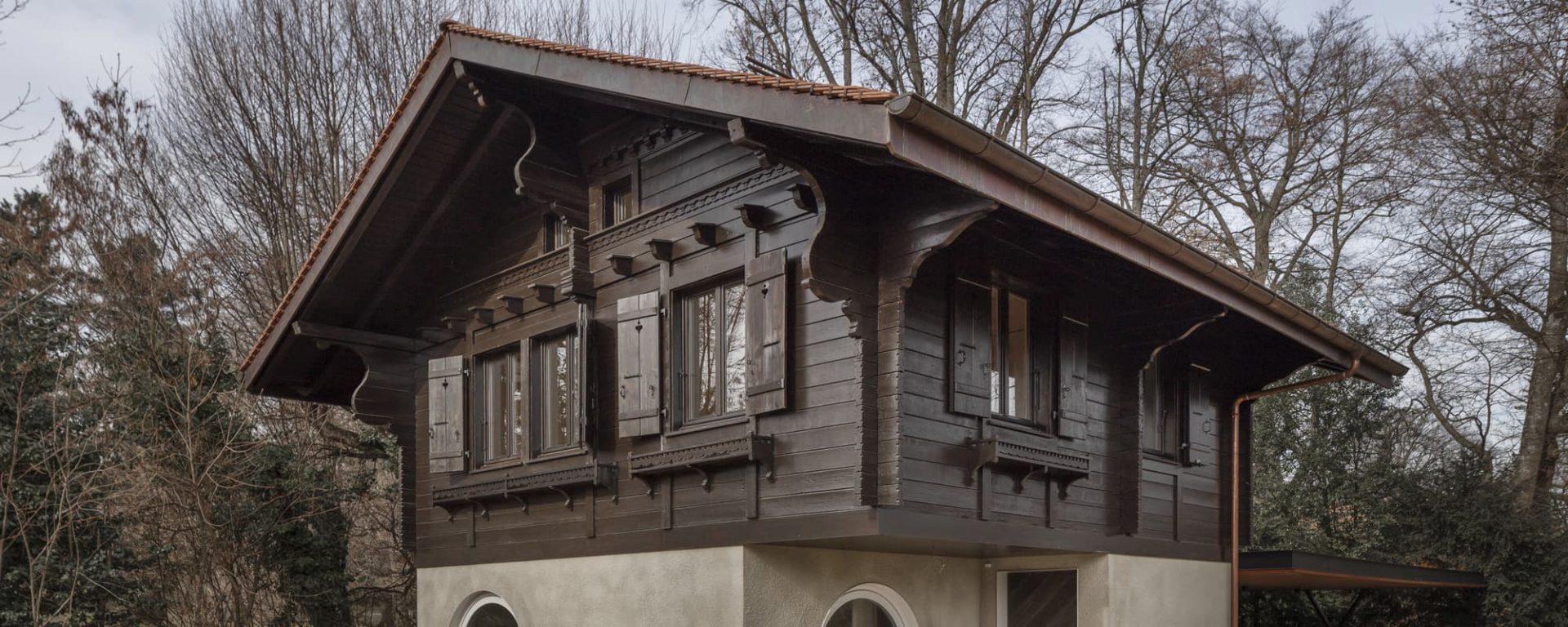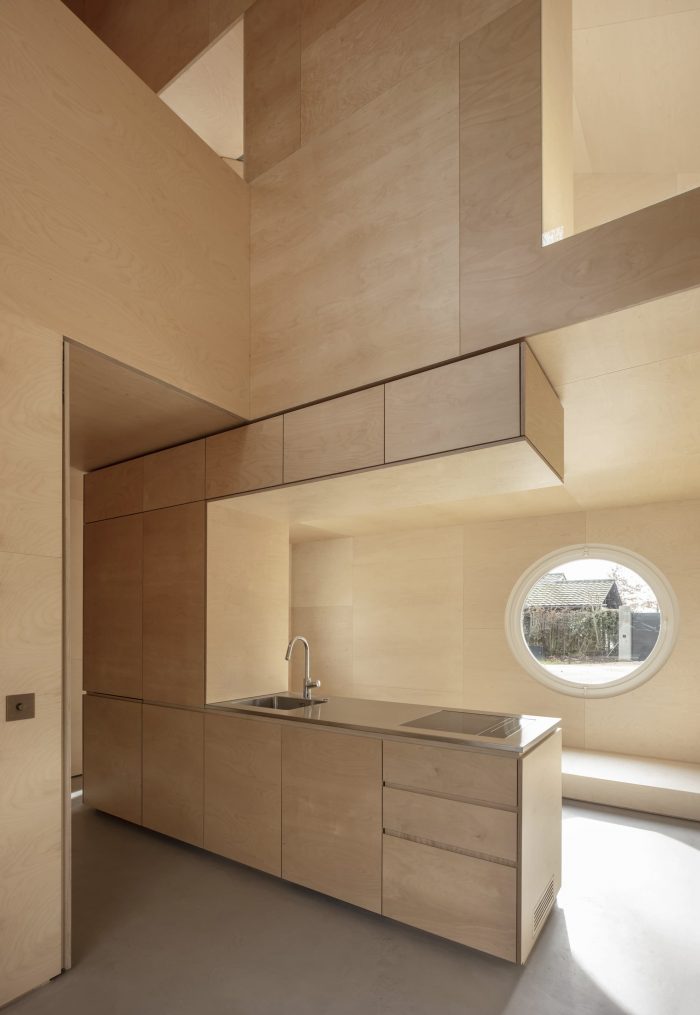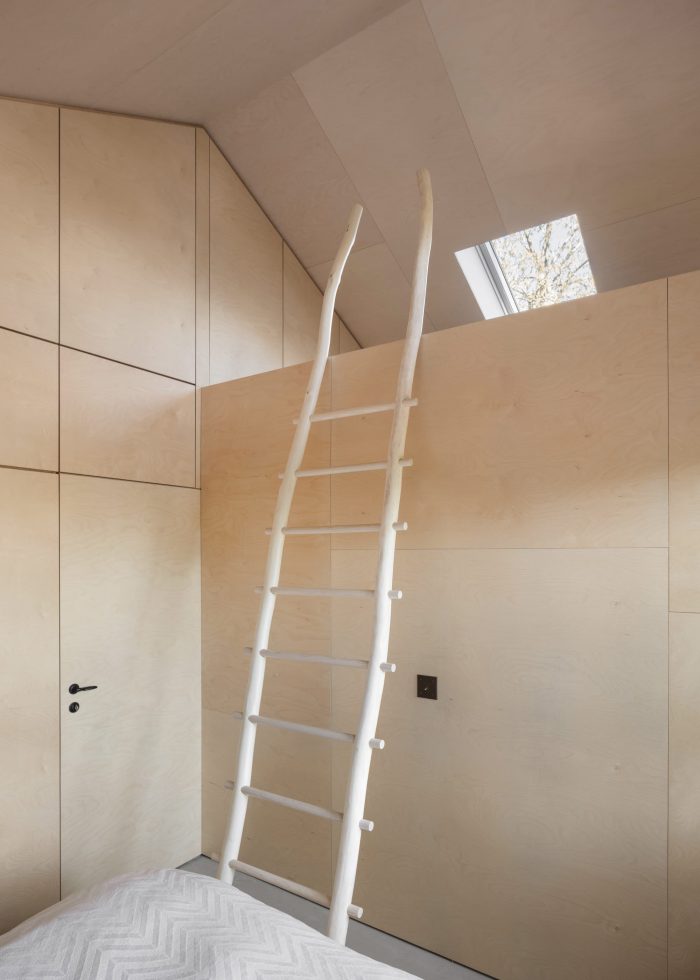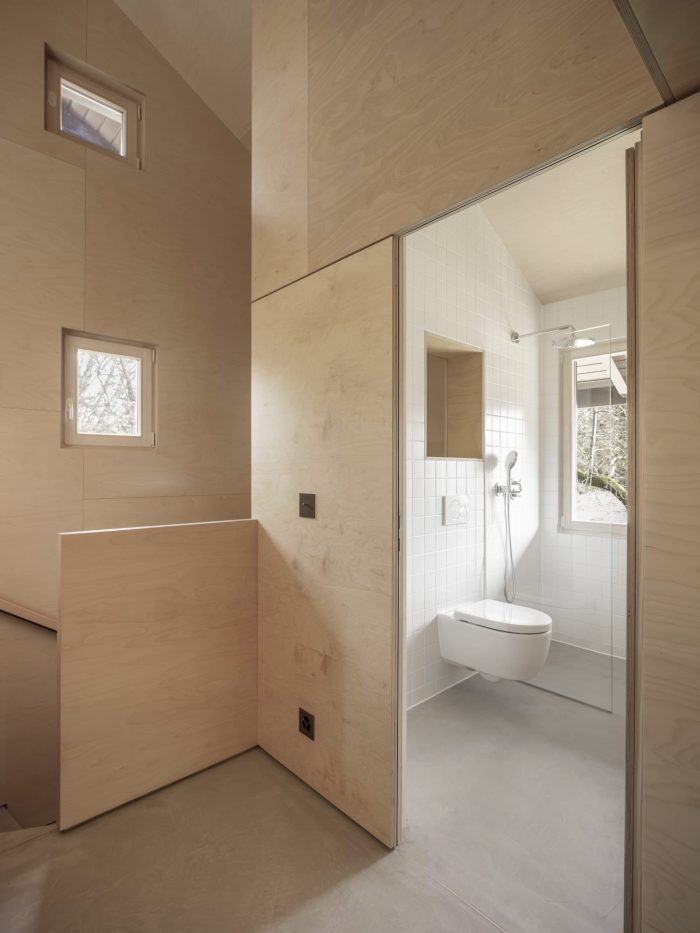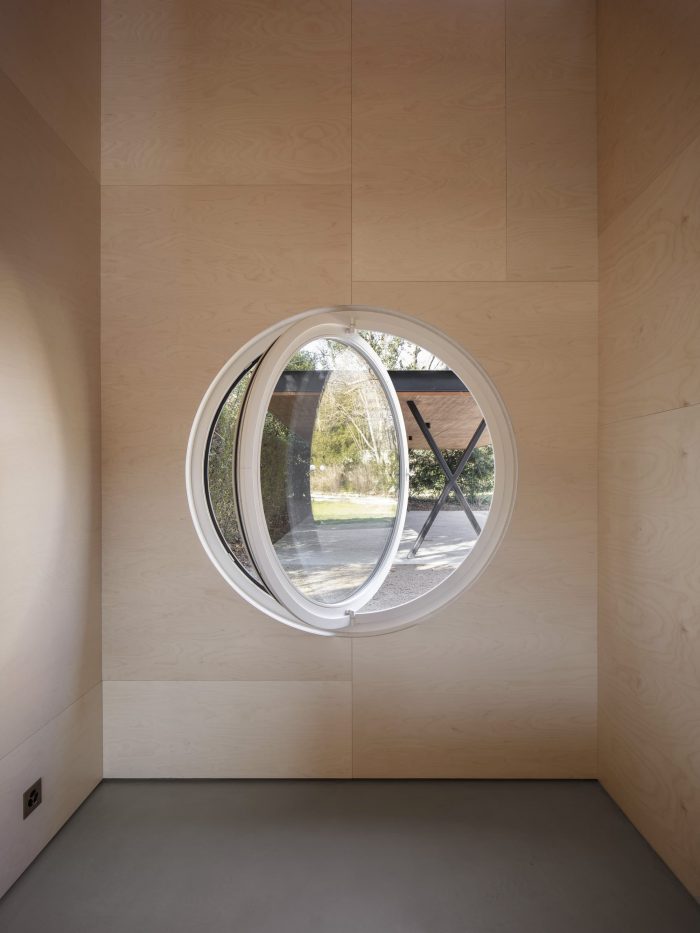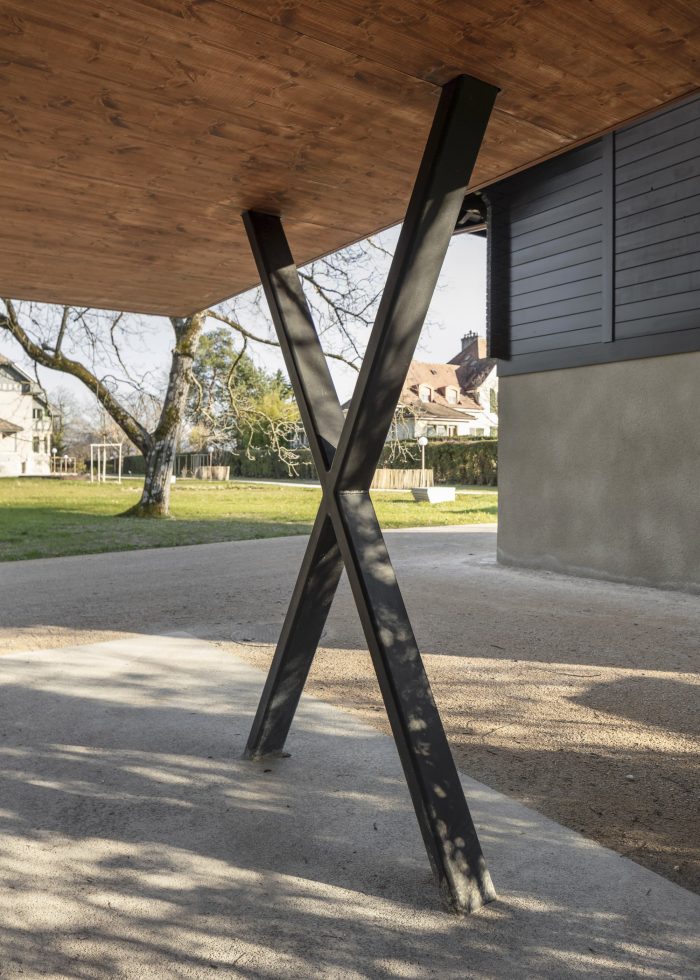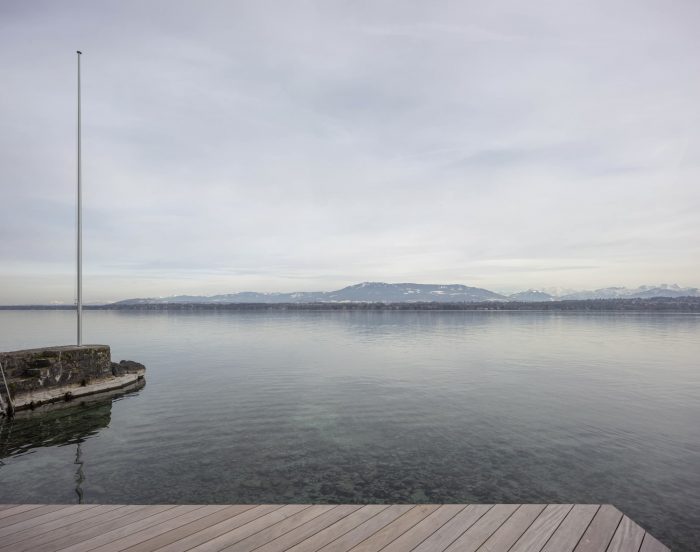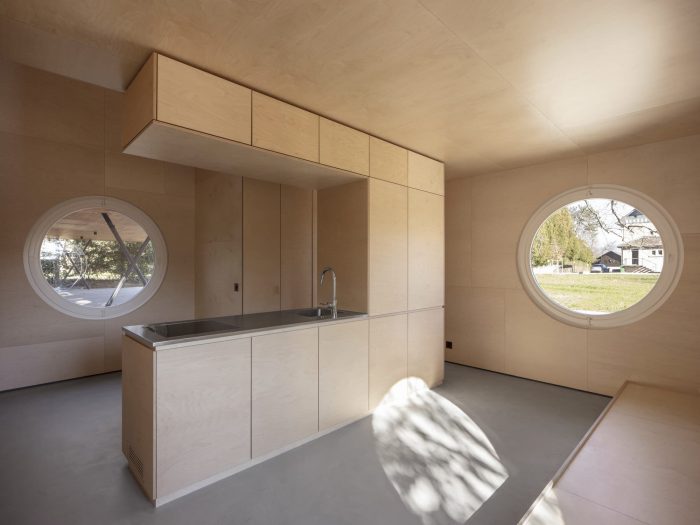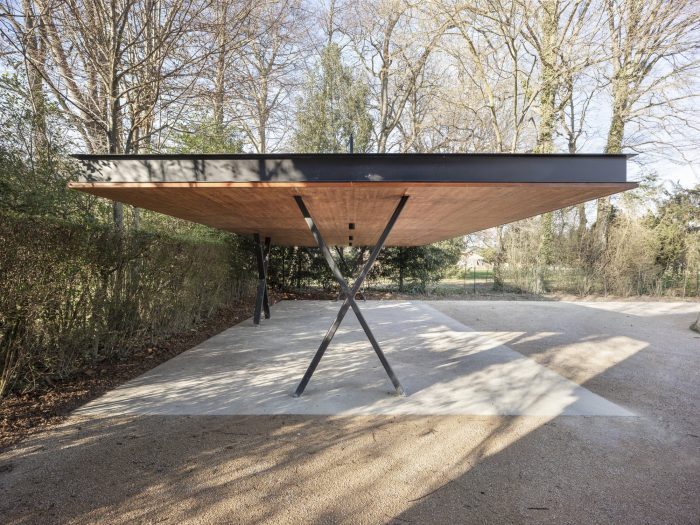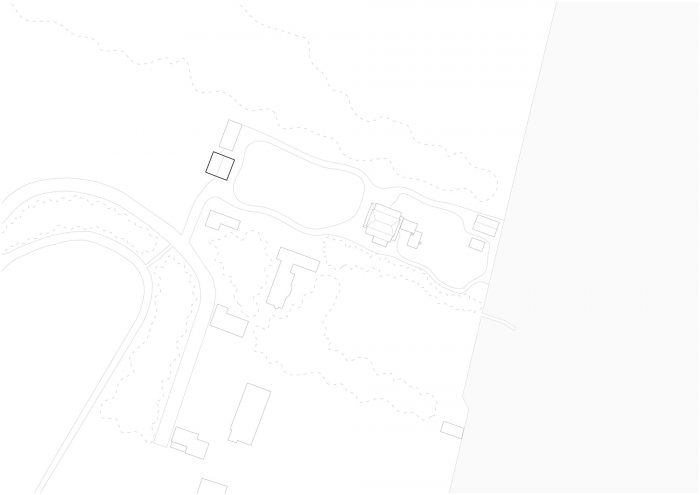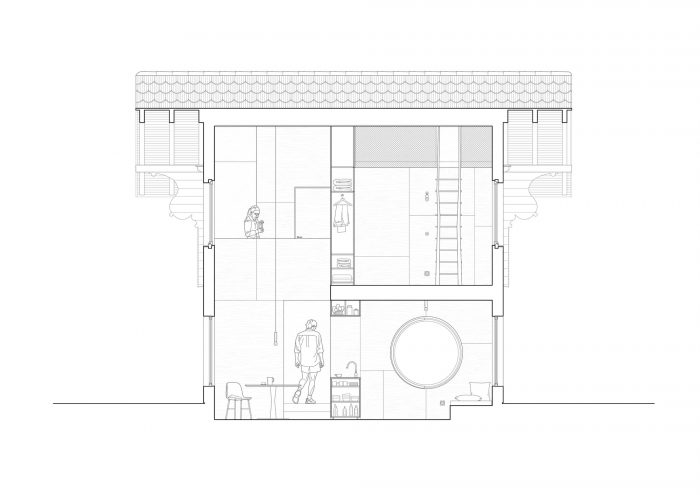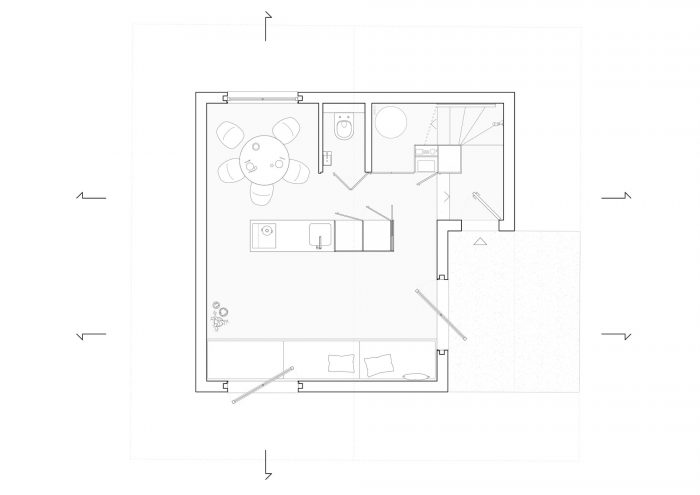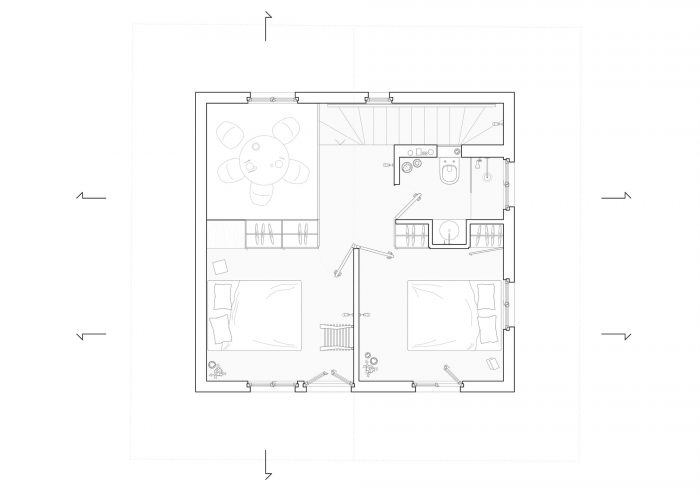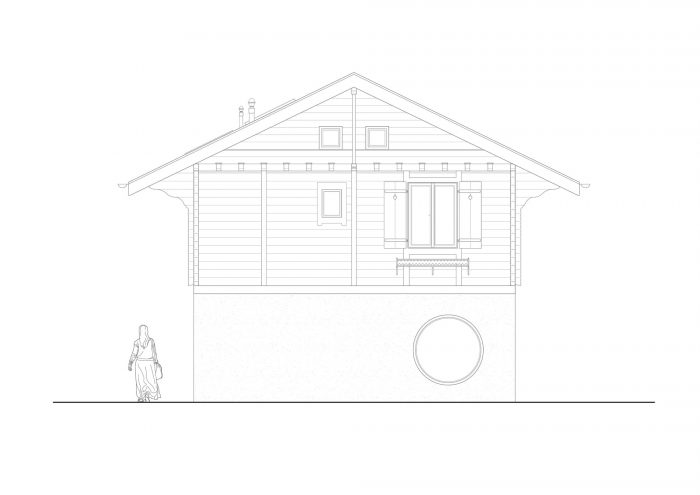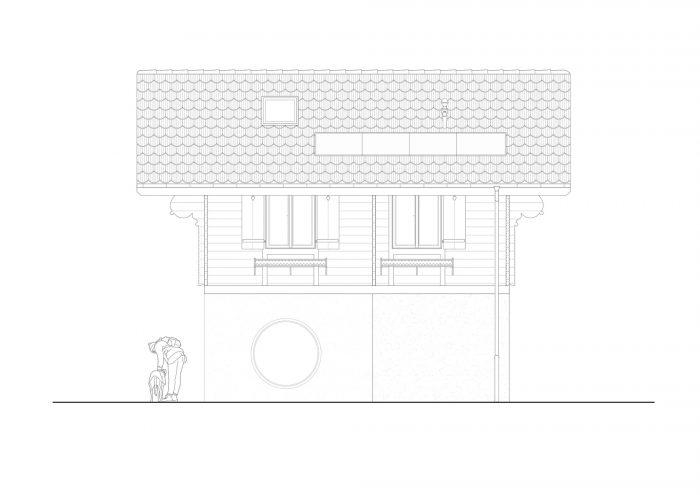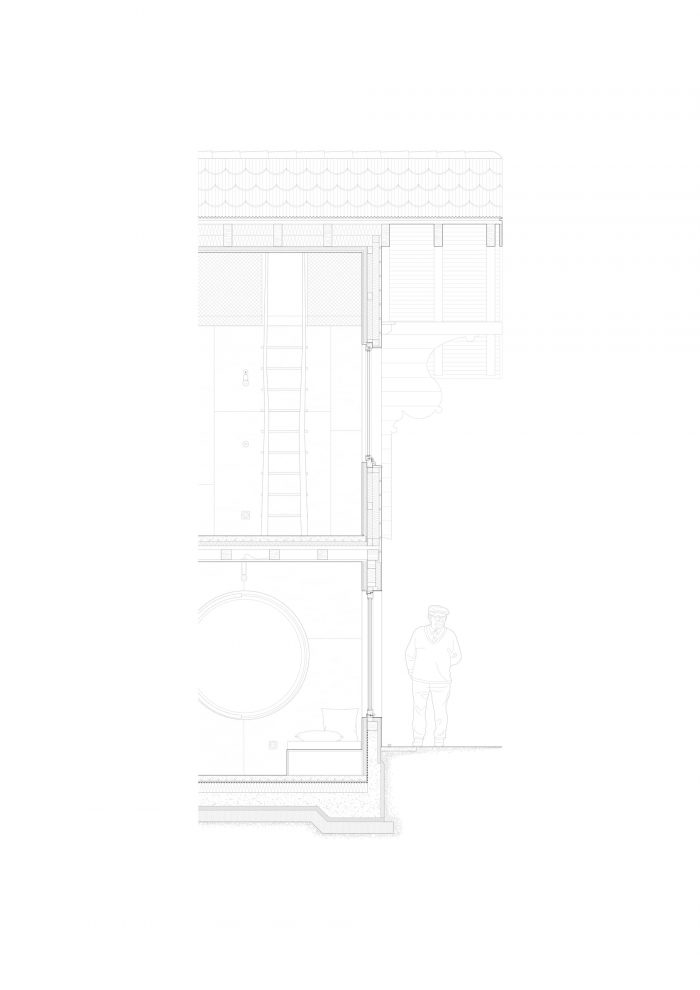内部建筑可以命名巴雷特先生的房子所经历的过程。一个有趣的想法,直接从医学界借来的,就是在这种外科干预中称自己为内科医生。一切都是从内部发展起来的。当建筑必须面对亲密的空间时,有一个明确的逻辑,在那里,隐私和人类关系的互动和复杂性在其最不公开的环境中出现。因此,它是关于内部性的。而该项目实际上是以这些标准为出发点来发展其概念和建设。
Internal architecture could name the process through which Mr. Barrett’s House has gone through. An interesting idea, directly borrowed from the medical world, would be to call ourselves internists in this sort of surgical intervention. Everything has been developed from the inside. There is a clear logic to do so when architecture has to face spaces of intimacy, places where the privacy and the interaction and complexity of human relations appear at its least public environment. It is thus about interiority. And the project literally took these criteria as a starting point to develop its conception and construction.
一个旧的车库建筑被分割成一个汽车空间的地下室和一楼的小公寓,已经被完全清空,并从内部进行了改造。上面的木制小木屋被完全抬起,放在实际建筑的一侧,然后加固,重新结构。只有在这种操作之后,它才被放回地下室的顶部。
An old garage building that was split into a car space basement and small first-floor apartment have been completely emptied and worked out from the inside. The upper wooden chalet was entirely lifted, placed on the side of the actual building and then reinforced, re-structured. Only after this operation, it was placed back on the top of the basement.
两层楼在空间上通过一系列相对复杂的部分联系起来,在小体积内创造出丰富的感知和空间感。BUREAU开发的大部分国内项目都集中在空间制造上,创造出空隙,让居民体验到将自己的感知投射到空间的身体感受。这样做的目的是为了创造内部性、丰富性、感知性体验,可以简单地丰富居住体验。
The two floors are spatially linked through a series of relatively complex sections that create a richness of perception and a feeling of space within the small volume. BUREAU develops a majority of domestic projects concentrated on space making, creating voids where the inhabitants can experience the bodily feeling of projecting one’s perception into space. The goal of this is to create interiority, richness, perceptive experiences that can simply enrich the inhabitation experience.
在巴雷特先生的房子里,一种新的木制(白桦木)全方位的氛围被 “注入 “到现在由整整两层楼组成的体积中。空间连接得到了青睐和加强,但以一种微妙的方式,以产生多种观点。这座房子试图成为未来居民的动态演员,参与到用户的日常生活中。
In the case of Mr. Barrett’s house, a new wooden (birch wood) all-over atmosphere is “injected” into the volume, composed now by two full floors. Spatial connections are favored, enhanced, but in a subtle way in order to produce a multiplicity of points of view. The house tries to be a dynamic actor for the future inhabitants, to participate in the everyday life of the users.
由于房子不是为一个特定的用户建造的,一个虚构的人物被命名为居住在这个项目中。巴雷特先生。他是约瑟夫-洛西的复杂电影《仆人》的主人公。在剧情中(由哈罗德-品特撰写),房子是出现一系列非常复杂和亲密关系的戏剧。室内空间不断被利用作为关系动态的舞台。镜子和多视角在电影中被展示出来;公寓在戏剧的构建中扮演了非常积极的角色。在我们的案例中,没有戏剧,而是对小空间的潜在占领,作为 “现实生活中的电影 “进入房子的情节。
As the house was not built for a specific user, a fictional character was named to inhabit the project: Mr. Barrett. He is the protagonist of Joseph Losey’s complex movie The Servant. In the scenario (written by Harold Pinter) the house is the play where a series of very complex and intimate relations appear. The interior spaces are constantly utilized as stages for relational dynamics. Mirrors and multiple points of view are shown in the movie; the apartment plays a very active role in the construction of the drama. In our case, there is no drama but a potential occupation of the small space that serves as a plot for a “real-life movie” to come into the house.
在保护和修缮方面,这样的建筑的宫殿式特点是完全可以假设的。它的历史和性质是由连续的层次组成的,它的生命是由这些层次组成的。这也是在建筑立面上创造圆孔的原因之一。它们肯定了它们的当代性,这种当代性将随着时间的推移而消失,并成为建筑的本土性的一部分。这是一个不断变化的过程,接受了时间。 室内的设计是谨慎和精致的,特别是在这样一个复杂的空间中如此重要的细节。在其他特征中,上面一个房间内的梯子直接参考了阿比-沃伯格对霍皮印第安人的研究。
In terms of preservation and renovation, the palimpsestic character of such a building is completely assumed. Its history and nature are made out of successive layers that module its life. This is one of the reasons for the creations of round holes in the façade. They affirm their contemporaneity which will disappear with time and become part of the vernacular nature of the building. It is an ever-changing process that accepts the time. The interior is approached with care and delicacy, especially in the so important details of such an intricate space. Among other features, the ladder inside one of the upper rooms makes a direct reference to Aby Warburg’s study of the Hoppi Indians.
Architects: Daniel Zamarbide
Area : 70 m²
Year : 2019
Photographs :Dylan Perrenoud
City:GENEVA
Country:Switzerland

